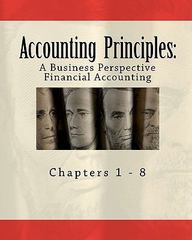Question
Demand and supply conditions in a market are specified as follows: D = {(q, p) | p = 32 0.5 q, 0 q 50}, S
Demand and supply conditions in a market are specified as follows: D = {(q, p) | p = 32 0.5 q, 0 q 50}, S = {(q, p) | p = 2 + 0.1 q 2 , 0 q 50}.
1. Determine the market-equilibrium quantity.
2. Determine the market-equilibrium price.
3. Determine the revenue of sellers (and the expenditure of buyers) at the market equilibrium.
4. Determine the total benefit of buyers at the market equilibrium.
5. Determine the buyers' surplus at the market equilibrium.
6. Roughly estimate the total cost of sellers at the market equilibrium. Explain how you obtained your estimate.
7. Estimate the sellers' surplus (or profit) at the market equilibrium. Explain how you obtained your estimate.
Demand conditions in the market change, while supply conditions stay fixed. The new market conditions are specified as: D = {(q, p) | p = 52 0.5 q, 0 q 50}, S = {(q, p) | p = 2 + 0.1 q 2 , 0 q 50}.
8. Determine the new equilibrium quantity in the market.
9. Determine the new equilibrium price in the market.
10. Determine the new equilibrium sellers' revenue (and buyers' expenditure) in the market.
11. Determine the new total benefit of buyers at the market equilibrium.
12. Determine the new buyers' surplus at the market equilibrium.
13. As a result of the new market conditions, does the sellers' equilibrium total cost increase, decrease, or stay constant? Explain your answer.
14. As a result of the new market conditions, does the sellers' equilibrium surplus (or profit) increase, decrease, or stay constant? Explain your answer.
Step by Step Solution
There are 3 Steps involved in it
Step: 1

Get Instant Access to Expert-Tailored Solutions
See step-by-step solutions with expert insights and AI powered tools for academic success
Step: 2

Step: 3

Ace Your Homework with AI
Get the answers you need in no time with our AI-driven, step-by-step assistance
Get Started


